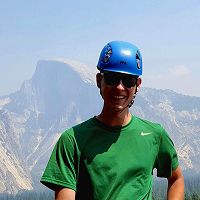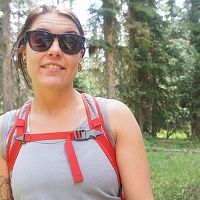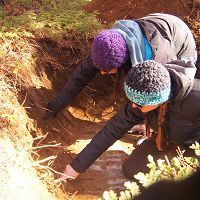Researcher Spotlight: Ryan Bart
Researchers from Southern Sierra Critical Zone Observatory come from many different backgrounds and work in a variety of disciplines. They all have their own story to tell. Take a look at this month's researcher spotlight Ryan Bart, Postdoctoral Scholar at the University of California, Merced, and learn about his work in the field of critical zone science!
Q&A between Ryan Bart and Madeline Castro
What is your field of interest/research? How did you become interested in this topic?
I consider myself to be an ecohydrologist, which means I study how vegetation affects the water cycle, and vice versa. Most of my research examines how disturbances such as wildfire affect the amount of streamflow that is generated from watersheds, which has implications for water resources and ecosystems. I became interested in this topic during my Masters when I had an opportunity to examine the effect of invasive species on water supplies in South Africa. I’ve been at it ever since.
What CZOs have you conducted research at? What kinds of research did you do there?
All my work has been in the Southern Sierra CZO. As a modeler, I am interested in ways of improving the skill of the models that I use. This often necessitates gathering field data to inform the model or to validate that the model is getting the right answers for the right reasons. My first exposure to the SSCZO was on a project that involved measuring predawn leaf water potentials and stomatal conductance of trees and shrubs in the Providence watersheds. The relationship between these two variables provides an estimate of species use water, which we were then able to incorporate into the RHESSys model. It turned out that knowing species differences in water use had a major effect on the results of the project, which demonstrates the importance of incorporating real data into the models.
What do you feel is the most exciting part of your research?
What makes my research exciting, at least to me, is that the ecohydrology of the Sierra Nevada is currently changing. We recently experienced the largest forest mortality event on record and the legacy of that event is going to persist for decades. At the same time, wildfires are becoming bigger and more severe. We don’t have a good grasp of how these transformations, in combination with climate change, will affect the ecohydrology of the Sierra.
Why is your field of study important?
Vegetation plays a substantial role in the water cycle through interception and transpiration, but is also affected by water cycle, as we have seen in the Sierras with the forest mortality event during the last drought. Understanding the feedbacks between vegetation and water is a key puzzle piece for understanding how all critical zone processes interact.
What is your favorite part of the Critical Zone and why?
Definitively the water part. However, water would be pretty boring to study if it weren’t for all the other critical zone components (I have little desire to study the water in my water bottle). I often imagine the different pathways that water takes as it moves through the soil matrix and the different strategies that rooting systems use to search for that water. We know little about how these processes play out at watershed scales despite the answers being right beneath our feet. This is why it is nice to be part of a community that is tackling critical zone questions.
Edited by Michelle Gilmore
Photo provided by Ryan Bart
© Margot Wholey December 2015
© Southern Sierra Critical Zone Observatory
News Category:
RESEARCH |
PEOPLE |
EDUCATION/OUTREACH |
OPPORTUNITIES
People Involved
CZO
-
Sierra, COLLABORATOR
-
Sierra, STAFF
-
Sierra, UNDERGRAD
Publications
2017
A Coupled Model for Simulating Future Wildfire Regimes in the Western US. Ryan R. Bart, Maureen C. Kennedy, Christina (Naomi) Tague, Erin J. Hanan (2017): Fall Meeting, American Geophysical Union, December 2017. Abstract GC51A-0789.
2017
The impact of wildfire on baseflow recession rates in California. Bart, R.L.; Tague, C. (2017): Hydrological Processes
2016
Effect of Tree-to-Shrub Type Conversion in Lower Montane Forests of the Sierra Nevada (USA) on Streamflow. Bart, R. R.,Tague, C. L., Moritz, M. A. (2016): PLOS ONE
2017
Effects of fire suppression under a changing climate in Pacific Northwest mixed-pine forests. Hanan, E. J.; Tague, C.; Bart, R.R.; Kennedy, M.C.; Abatzoglou, J.T.; Kolden, C.; Adam, J. (2017): Fall Meeting, American Geophysical Union, December 2017. Abstract GC51A-0794.
Discipline Tags and CZOs
Biology / Ecology
Hydrology
Modeling / Computational Science
Outreach / Education Research
Sierra
Related News

Researcher Spotlight: Russell Callahan
11 Apr 2018 - Meet the people behind the research! Russell uses a combination of geophysics and regolith geochemistry to understand landscape evolution.

Researcher Spotlight: Caitlin Collins
13 Mar 2018 - Meet the minds behind the data! Caitlin specializes in modeling water fluxes from drop to catchment scale, tracking water through the Critical Zone.
Explore Further








